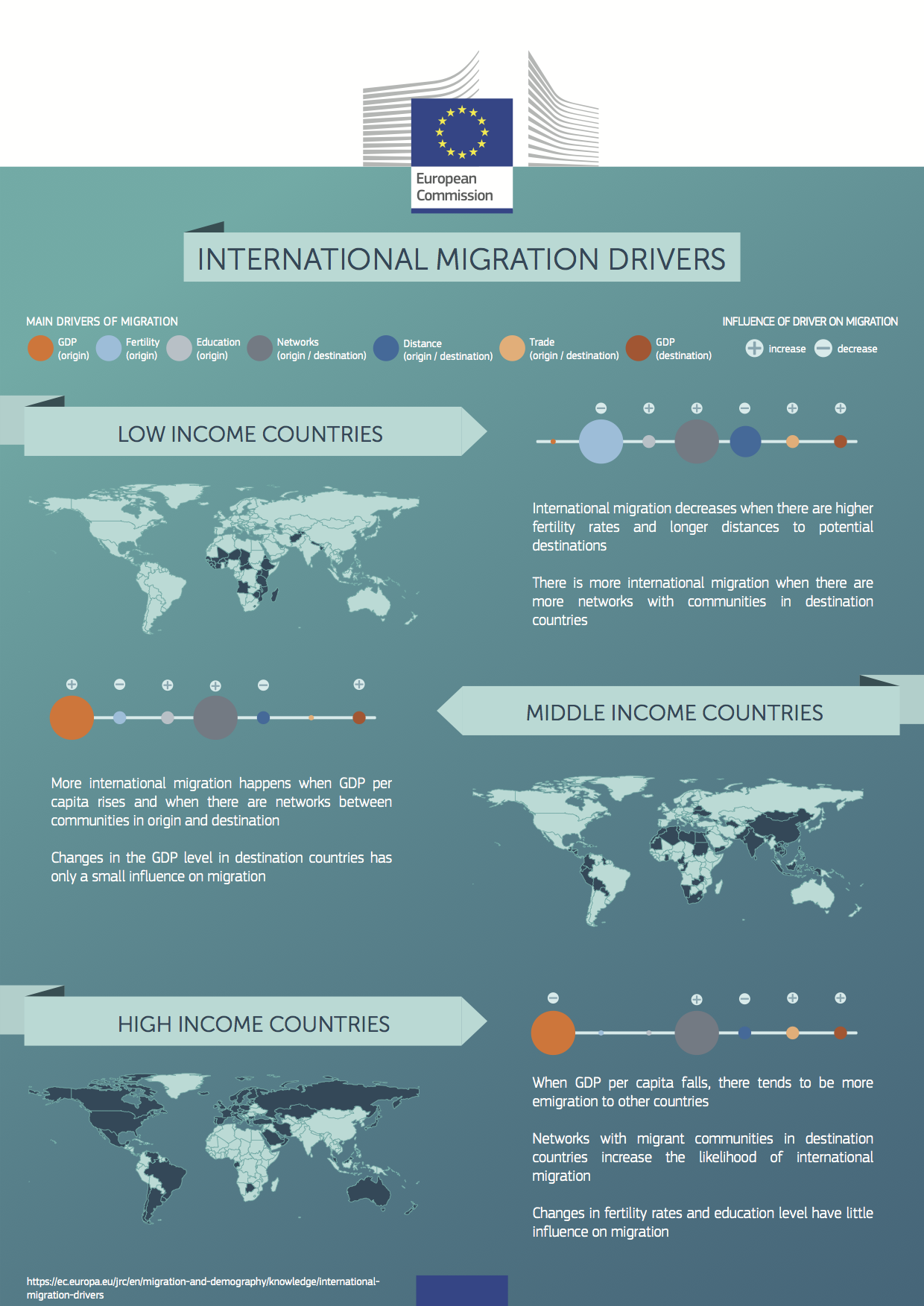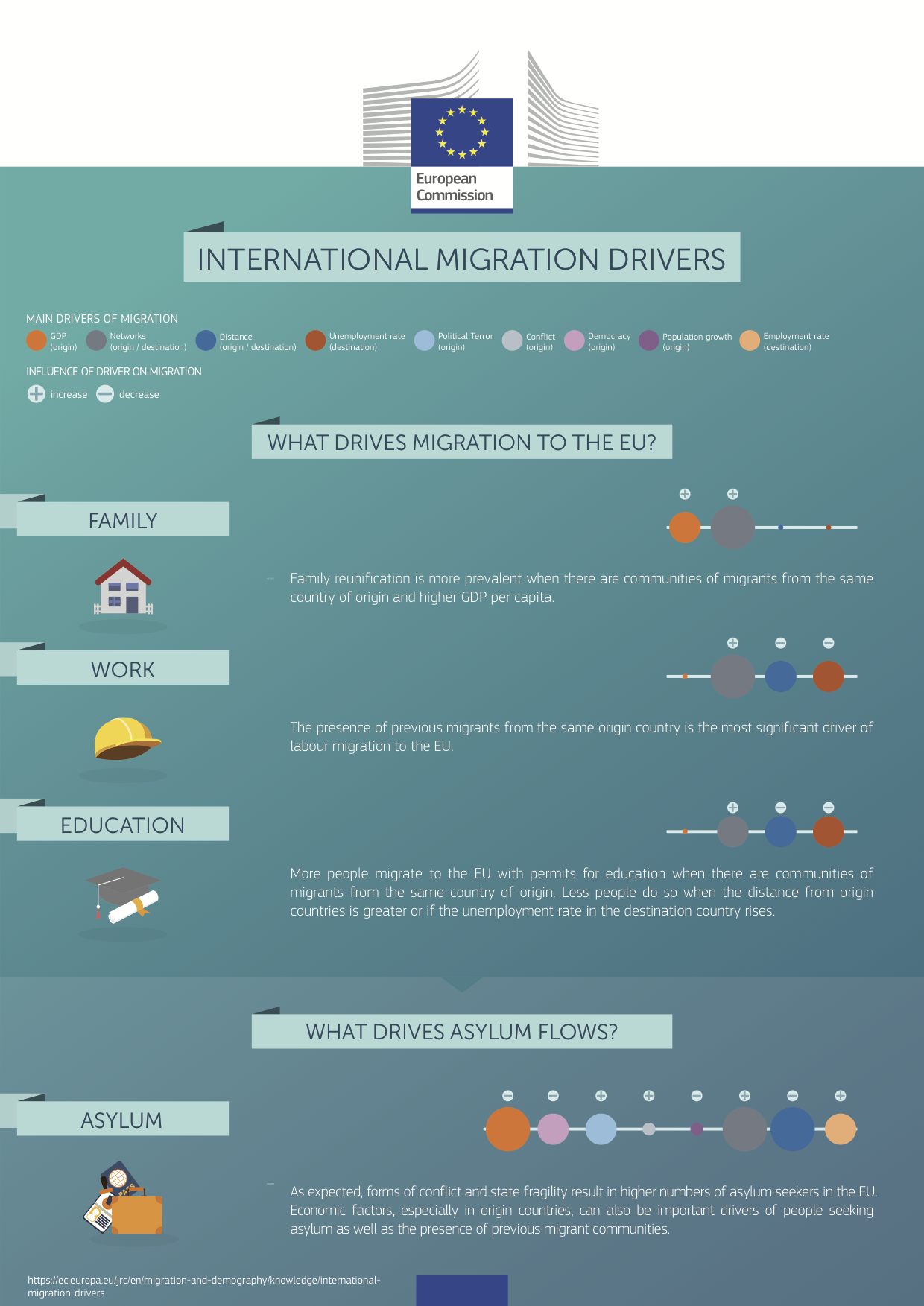
To better understand current and potential future migration trends across the world.
Why do people migrate? Through an extensive analysis of international data, the International Migration Drivers report shines new light on this question by showing which factors are the most important drivers of migration flows around the world.
Get the report: International Migration Drivers
In doing so, it takes a step towards better understanding what shapes international migration and translating that knowledge into a resource to support policymaking.
The report examines the structural characteristics of countries of origin and destination of migrants, migration flows to the EU, variations in asylum applications and the individual decisions of people who prepare to migrate. The findings highlights that although immediate challenges need to be addressed quickly and effectively when they arise, short-term responses to migration policymaking rarely consider the underlying structural factors which have driven global migration patterns.
The following dashboards show the main findings from the study.
Using the 'Full Screen' option, in the bottom right corner of each infographic, is advised.
Structural factors
This dashboard shows the drivers of international migration from high, middle and low income countries, drivers of different forms of migration to the EU, and drivers of people moving to seek asylum:
Intentions to migrate
This dashboard shows the individual characteristics affecting whether people are more or less likely to have an intention to migrate:
Infographics
The following infographics give an overview of the key messages:



| Originally Published | Last Updated | 22 Nov 2018 | 10 Feb 2020 |
| Related organisation(s) | JRC - Joint Research Centre |
| Knowledge service | Metadata | Migration and Demography | Drivers of Migration | Drivers |
| Digital Europa Thesaurus (DET) | migration |
Share this page
